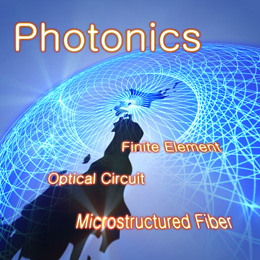
With the motto of enjoying world-class research, and building a solid career path through such research, we are conducting research on photonics to respond to the growing demand for information communications at the Laboratory of Information Communication Photonics. Recently, information communication networks have been evolving at speeds above the so-called Moor’s Law. From electricity to light – that is, photonic networks have become the mainstay of communication networks. In our laboratory, advanced research on next-generation photonic networks is promoted to achieve high capacity optical communication services and contribute to the development of a safe ubiquitous Internet society.
To the Laboratory of Information Communication Photonics website
Novel optical fiber
The amount of information that can be transmitted by current used optical fibers is rapidly reaching its limit. Research is conducted on completely new types of optical fibers, such as multi-core fibers and microstructured optical fibers, to overcome such a limit. Work is also proceeding on optical fiber sensors that ensure safety.
Ultra-compact optical circuit
More and more communication networks are now based on optical technology, such as the core (trunk line), metro (intercity) and access (subscriber) network systems. Optical technology has also come to be used in computers’ main boards and chips. To deal with this situation, research is conducted on the construction of an ultra-compact optical circuit using photonic crystals and/or high-index-contrast waveguides.
Optical simulator
Research is being conducted on an optical simulator that supports the design of optical fibers and circuits. This simulator is loaded with a high-precision and reliable numerical simulation program that has been developed independently based on the finite element method and the beam-propagation method. In addition, an optimization technique such as genetic algorithm has been introduced for the automation of the optimal design.


